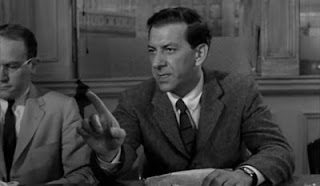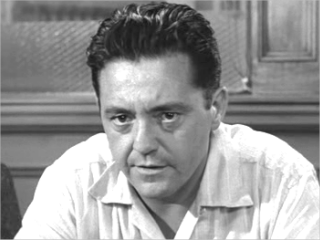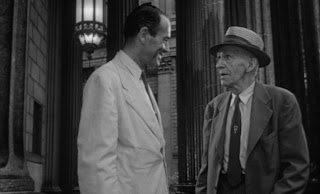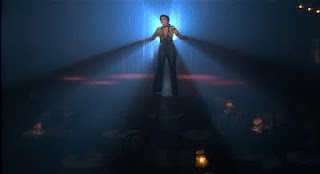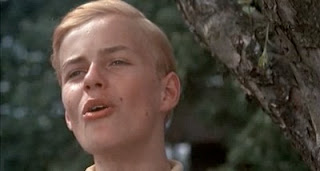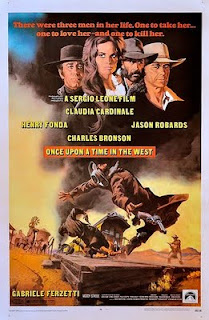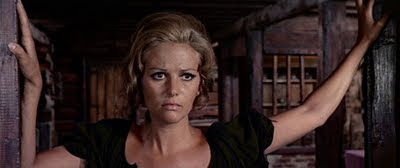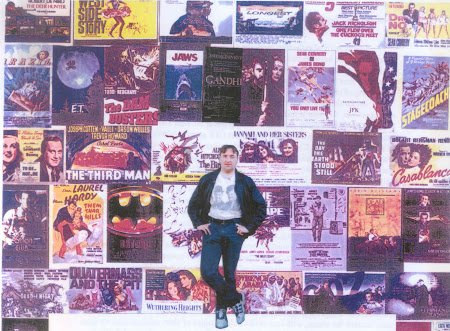Saturday, 17th July 1993: the day is etched in my memory as being quite a memorable one. Thanks to my friend Craig Stevens' skills in getting an opening weekend ticket, I watched the first big screen release in the UK of Steven Spielberg's latest blockbuster - the day when cinema special effects moved up to the next level.
Never mind that cinema was changing from that day onward; it was just a bloody good film, one that reaffirmed Spielberg's ailing career after his previous efforts - in particular his previous film
Hook had packed in his loyal audience, but few of them or the critics were moved. The sight of a giant inanimate crocodile devouring Captain Hook was supplanted a year later by the far greater cinematic image of a terrifying velociraptor attack, and the mighty T-Rex telling everybody who's boss on Isla Nublar.
The genesis of this cinema landmark came from the playfully imaginative mind of the late Michael Crichton, who made a buck or two out of his own scientific thrillers, as much as Dan Brown made a mint out of exploiting archaeology and religion, and Ian Fleming from the intelligence service. A little knowledge, it seems, g

oes a long way.
The template for
Jurassic Park was Crichton's own 1973 cult sci-fi thriller
Westworld: a seemingly idyllic theme park where guests can live their dreams and be characters in the Middle Ages, Ancient Rome, or the Wild West, without any fear of damage to their person - until of course, the science begins to show its imperfections and things start to go wrong. The thrilling sight of Yul Brynner's robotic gunfighter relentlessly pursuing hapless Richard Benjamin through the various worlds was scary, quirky, and of course highly far-fetched, but Crichton was having fun staging the ultimate Wild West chase, with a 1970's spin.
The climactic third act of
Jurassic Park very much mimics that of
Westworld, where supporting characters (among them a pre-stardom Samuel L. Jackson) intrinsic to the running of the theme park curiously disappear or get killed off, leaving the heroes - and the antagonists - to fend for themselves. Among the latter is Dennis Nedry (Wayne Knight), a rare case of stereotyping by Spielberg, portraying the film's chief catalyst as a fat, fast-food eating slob of a computer wizard, whose hi-tech skills lead him to greedily steal the precious DNA samples, and who in the process shuts down the fences during a particularly badly timed storm, which unleashes the dinosaurs - whom

inevitably, claim Nedry as their first victim.
Those among the heroes left behind therefore to deal with the mayhem are Dr. Ellie Sadler (the always excellent Laura Dern) and her business/life partner Dr. Alan Grant, played in droll fashion by Sam Neill, the cinematic man for all seasons whether in British or Antipodean comedy or drama, or the supernatural (such as the adult Damien in
The Final Conflict) and science fiction, not just for Spielberg but also subsequent cult items such as the TV series
Space and cult Australian comedy
The Dish.

Also most notably making a return to acting after 16 years behind the camera was Richard Attenborough as billionaire John Hammond, the book's original Frankenstein figure, but here translated by Spielberg and Crichton into a much more jovial and only marginally Machiavellian owner of the theme park (clearly modelled on Walt Disney), who is as much a victim of the science as anyone else. Hammond's mentality in Spielberg's version is essentially that of the showman or movie producer who wants to produce a great spectacle (and Attenborough himself has certainly made his own fair share of spectaculars such as
Gandhi), and leaving scientific morality to the philosophers (and the scientists). In a sense, Hammond also mirrors elements of Steven Spielberg.
The scientific Devil's Advocate therefore, shows up in the presence of the wisecracking "chaotitian" Dr. Ian Malcolm, a great cameo for Jeff Goldblum. Just as
Star Wars had its cynical Han Solo-type figure, so does
Jurassic Park have its cynical protagonist in the shape of Golblum's character who voices the film's scientific conscience ("You're scientists were so preoccupied with whether they could they didn't stop to think if they
should!") - although as most science boffins will tell you, a lot of the science of
Jurassic Park is highly theoretical - the sight of the T-Rex on the Jurassic logo is Cretaceous Era rather than the Jurassic Era. But what did it matter, the very idea - no matter how improbable - that dinosaurs and Man could share the Earth in the modern world, is still chilling and thrilling. The film, and the book, are very much the most gloriously conceived science faction.

Dr. Ian Malcolm (Jeff Goldblum) flirts with Dr. Elly Sadler (Laura Dern). The flirtations were off-camera as well as on.
The discreetly hidden name - one might say the ghost editor - behind Spielberg's huge success was that of George Lucas. It was he who supervised the editing - and of course, the special effects - of
Jurassic Park whilst Spielberg was away in Poland shooting
Schindler's List - considered by many to be his masterpiece.
I have failed to mention in the course of this blog, Spielberg's familiar well-established working relationship with child actors. In this respect he was also well served by two exemplary members of that breed, Ariana Richards and Joseph Mazzello (outstanding in
Shadowlands and also Kubrick's original choice for the boy android in
A.I.), who become the gullible victims of the dinosaurs. By the end there's no question of who's in charge of Jurassic Park once the T-Rex bursts his (or rather,
her) way through the complex, as the slogan "When Dinosaurs Ruled the Earth" is knocked off its perch. Spielberg was so impressed by Industrial Light & Magic's work that he installed an eleventh hour ending for the T-Rex to give him his true star power. It was a pivotal moment, both in the story and in the field of cinema special effects.
 The velociraptors prove too hot to handle, and are soon stalking young Timmy (Joseph Mazzello) in the kitchen: Spielberg's homage to Stanley Kubrick's The Shining.
The velociraptors prove too hot to handle, and are soon stalking young Timmy (Joseph Mazzello) in the kitchen: Spielberg's homage to Stanley Kubrick's The Shining.
Okay, plotwise the original story takes a hike once the dinosaurs take over, but this was always Michael Crichton's point anyway. Spielberg returned to the original novel in
The Lost World: Jurassic Park (the one and only time he has filmed a sequel in name) which covered some of the darker elements that he didn't dare cover first time around, and a second sequel (with Sam Neill again) returned to the slightly more tongue-in-cheek aspects of the first film.
Looking back to that pleasant July day in'93, coming out of the cinema into Leicester Square was something akin to stepping off a fairground ride. There were those among us who were disappointed at the plot's shortcomings compared to the chilling original, but as a cinematic entertainment it could not be faulted and marked the beginning of a new era.

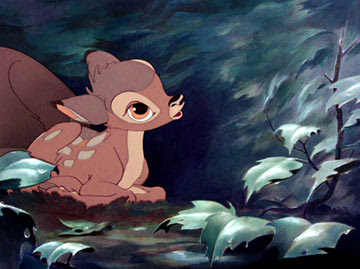 If you want the rites of passage story, quintessentially this is it, translated in anthropomorphic terms, playing on children's sentimental fondness for animals, within some beautifully natural settings. The Disney studio could not surpass this film for standards in animation (Fantasia and others have only matched it) from what was unquestionably their Golden Era. The opening, atmospheric, multi-plane animated tracking shot through the forest (accompanied buy some great music throughout the film) sets its stall out quite magically from the first.
If you want the rites of passage story, quintessentially this is it, translated in anthropomorphic terms, playing on children's sentimental fondness for animals, within some beautifully natural settings. The Disney studio could not surpass this film for standards in animation (Fantasia and others have only matched it) from what was unquestionably their Golden Era. The opening, atmospheric, multi-plane animated tracking shot through the forest (accompanied buy some great music throughout the film) sets its stall out quite magically from the first. cinema is where Bambi looks back through the snowy meadow, and wonders where his mother has disappeared to. Scores of children through the decades have sat in the cinema (or nowadays, in the living room), with perplexed confusion and uncertainty, sometimes giving way to tearfulness, asking their parents what's happened
cinema is where Bambi looks back through the snowy meadow, and wonders where his mother has disappeared to. Scores of children through the decades have sat in the cinema (or nowadays, in the living room), with perplexed confusion and uncertainty, sometimes giving way to tearfulness, asking their parents what's happened













